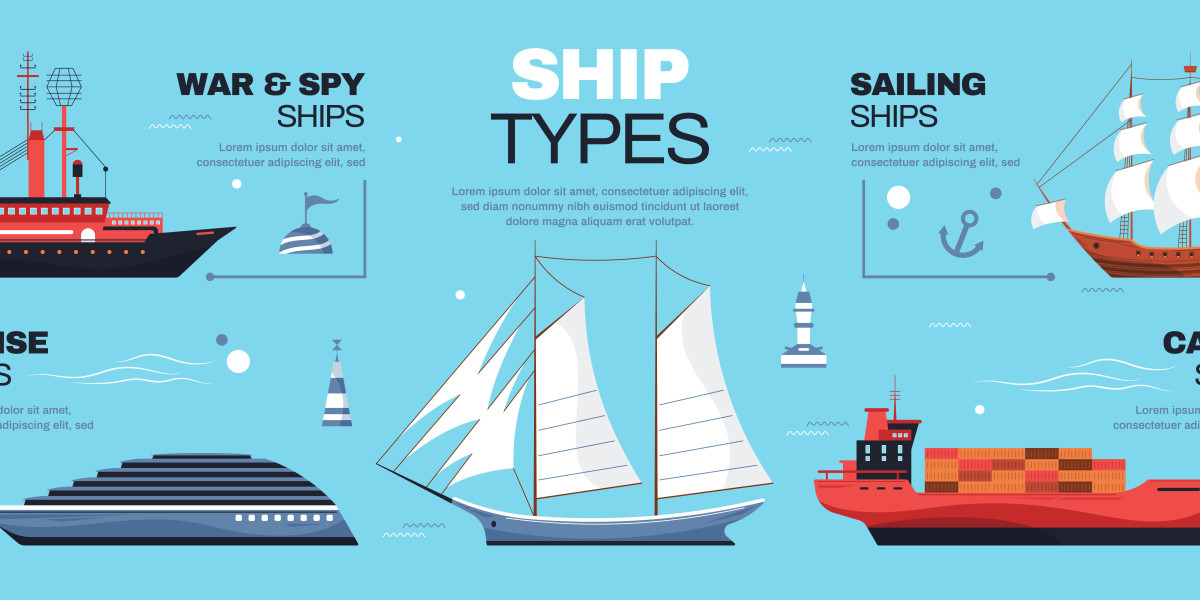Ships have been a vital part of human civilization for centuries—whether for trade, exploration, defense, or leisure. Despite modern advancements in design and technology, the basic structure and components of a ship remain grounded in traditional maritime architecture. Understanding the parts of a ship is essential for seafarers, engineers, and even curious learners interested in maritime operations.
In this blog, we’ll break down the major parts of a ship and their functions, giving you a clear picture of what keeps these giants of the sea afloat and operational.
Hull
The hull is the main body of the ship, forming the watertight structure that provides buoyancy and supports all other components. It includes the bottom, sides, and deck of the ship.
Functions:
Provides buoyancy
Protects internal compartments
Withstands external forces like waves and pressure
Bow
The bow is the front (forward) part of the ship. It's usually pointed or shaped to reduce resistance as the ship moves through water.
Functions:
Cuts through water efficiently
Reduces drag
Enhances stability and speed
Stern
The stern is the rear (back) part of the ship. It houses critical systems such as steering gear and propulsion machinery.
Functions:
Supports the rudder and propeller
Affects water flow and stability
Sometimes includes a swim platform or loading ramp
Deck
The deck is the flat surface covering the hull, similar to a floor in a building. Ships may have multiple decks stacked on top of each other.
Types of Decks:
Main Deck – the principal deck of the vessel
Upper Deck – often used for navigation and cargo
Lower Decks – typically house cabins, storage, or machinery
Bridge (Wheelhouse)
The bridge is the control center of the ship. From here, the captain and officers navigate and control the ship’s movements.
Includes:
Steering controls
Radar and navigation equipment
Communication systems
Propeller
The propeller is located at the stern and rotates to push the ship forward (or backward). It’s powered by the ship’s engine.
Function:
Converts engine power into thrust to move the ship through water
Rudder
The rudder is a vertical plate behind the propeller that controls the ship’s direction.
Function:
Turns the ship left or right (port or starboard)
Anchor
The anchor is a heavy device lowered to the seabed to hold the ship in place when stationary.
Function:
Prevents the ship from drifting due to wind or currents
Keel
The keel is the central structural base of the ship running along the bottom from bow to stern.
Function:
Provides structural strength and stability
Acts as the “backbone” of the ship
Mast
The mast is a tall vertical structure that supports navigation and communication equipment, and sometimes sails (on sail-powered vessels).
Function:
Holds radar, lights, antennas, and flags
Cargo Hold
The cargo hold is the internal space used to store goods or cargo.
Function:
Maximizes storage capacity
Protects cargo from weather and sea
Engine Room
The engine room is where the ship’s main engines and other critical mechanical systems are housed.
Function:
Powers propulsion and electrical systems
Requires strict safety and operational procedures
Funnel (Stack)
The funnel is a chimney-like structure used to expel exhaust gases from the engine.
Function:
Vents engine exhaust safely above deck
Helps prevent fumes from entering occupied areas
Lifeboats & Life Rafts
Located on the deck or sides of the ship, lifeboats are essential safety equipment used during emergencies.
Function:
Ensures safe evacuation of crew and passengers
Superstructure
The superstructure is the part of the ship built above the main deck. It includes the bridge, cabins, and other facilities.
Function:
Houses living quarters, navigation rooms, and offices
Conclusion
From the keel at the bottom to the mast at the top, each part of a ship plays a vital role in its operation, safety, and performance. Whether you are studying marine engineering, preparing for a career at sea, or just interested in maritime vessels, understanding the parts of a ship gives you insight into how these incredible machines master the oceans.













